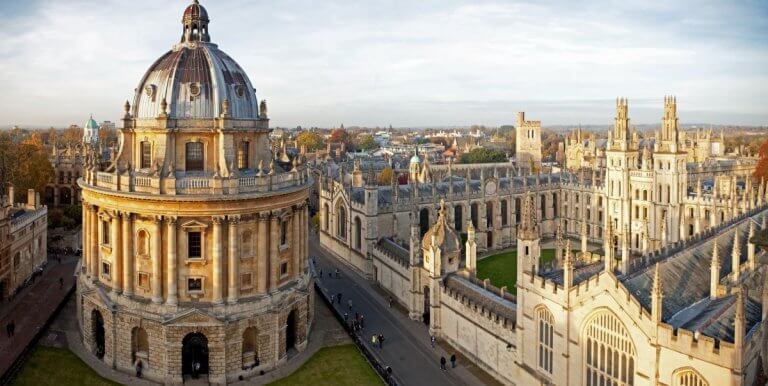
There is more scrutiny and pressure for universities today to practice inclusivity and diversity when it comes to hiring faculty and admitting students.
It’s no longer just a race issue, as being truly diverse and inclusive means including those from different sexual orientations, socioeconomic backgrounds, physical limitations, political beliefs, and more.
Having a more diverse student population as well as a faculty is beneficial for all. Students are more culturally exposed, and benefit from learning from others with different viewpoints and perspectives.
Students call for inclusivity, university action at UK town hall https://t.co/YePY0nKpcW pic.twitter.com/c6Jn2rOy2A
— Kentucky Kernel (@KyKernel) March 2, 2016
In a world that’s focusing more and more on globalisation, students are increasingly being encouraged to adopt international mindsets and global perspective, which can be better achieved when there is diversity among peers and teachers.
Falling under the inclusivity umbrella is also the growing backlash over universities who prioritise those with privilege, in light of the recent admissions scandal in the US.
Oxford University in the UK has been criticised in the past for not being sufficiently inclusive in its student population, as some of their colleges has failed to admit a single black student.
Therefore, they have recently announced that they have plans for “a quarter of students to come from disadvantaged backgrounds by 2023,” promising a “sea-change” in admissions, according to a recent report by the BBC.
#OxfordUniversity to have 25% students from disadvantaged backgrounds by 2023https://t.co/w6iz8RLRdg
— PrepTube.in (@PrepTube) May 24, 2019
The report stated, “The Sutton Trust social mobility charity showed recently that Oxford and Cambridge recruit more students from eight, mostly-private schools than almost 3,000 other UK state schools put together.”
“Labour MP David Lammy has lambasted the university for admitting too few black students. The university wants to send a strong signal that it remains very competitive to get a place – but that should be about ability rather than background.”
Prof Richardson said that she wants to ensure that “every academically exceptional student in the country knows that they have a fair chance of a place at Oxford”.
According to the report, currently 15 percent of undergraduate students at Oxford come from deprived areas.
The university is targeting a significant increase in that percentage to 25 percent over the next four years, through an access scheme which will have places for 200 high-achieving disadvantaged students every year.
“These will be students, identified during the application process, who will be offered a place and then given extra support before beginning their degree courses.
“Another 50 places will be available for a foundation year, aimed at developing students who show high academic potential, but whose education might have been disrupted or who had to overcome personal disadvantage.Those who successfully complete the foundation year will go on to begin undergraduate courses.”
Who are considered ‘disadvantaged’?
Two postcode-based systems, named Polar and Acorn, measure local levels of deprivation or affluence to determine who can qualify for these places.
Since it’s not a perfect system, the university said it will also consider other markers of hardship, such as those who have care responsibilities or eligibility for free school meals.
The Independent reported that besides aiming to admit 25 percent of those from disadvantaged backgrounds, the university will also offer a free year of study to those from these backgrounds who fail to meet the A-level grades that are required to enter Oxford.
Exclusive: Oxford to bring in a foundation year across the university for pupils with A level grades as low as BBB to boost number of state school, disadvantaged & BAME students. Story @thesundaytimes https://t.co/9xcZoKM0V0
— Sian Griffiths (@SianGriffiths6) May 19, 2019
“Around 50 bright students who have experienced severe disadvantage or educational disruption, and are not in a position to make a ‘competitive application’, will be offered a foundation year.”
“The participants will all be based at Oxford colleges and provided they successfully complete the programme, will move on to the undergraduate degree for which they were admitted.”
In addition, there will also be another programme launching soon that will help up to 200 students from poorer backgrounds receive additional support for successful transition to school.
This programme, which is free for them, will comprise of “structured study at home, plus two weeks of residential study at Oxford, just before the start of the undergraduate term.”
When it’s fully up and running, these programmes should help up to 250 state school students a year, which represent 10 percent of Oxford’s UK undergraduate intake, according to the report.
Sir Peter Lampl, founder and chairman of social mobility charity Sutton Trust, lauded the university’s efforts to be more socially inclusive.
He said, “It’s great to see Oxford looking to new solutions to tackle the problem of how to support students from under-represented backgrounds. The scale of these programmes is really impressive.
“Many poorer students just narrowly miss out on places because they haven’t quite got the grades required. This will give a wider pool of students access to one of the world’s great universities.”







